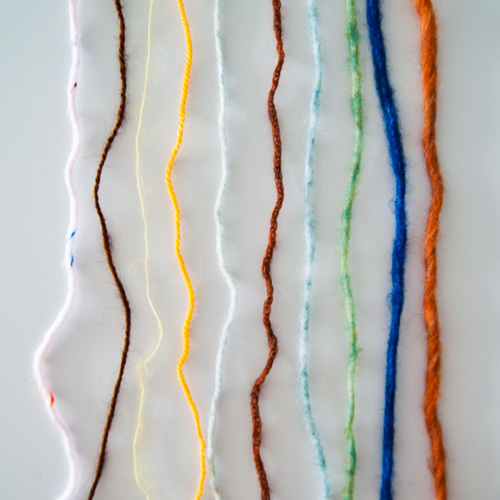How To: Substitute Yarn in Knitting Patterns
There are many reasons you’d want or need to substitute the yarn that a knitting pattern calls for with something more accessible to you. For me, it was the fact that I’m an English-speaking knitter in Norway, and most yarns that American or British knitting patterns specify isn’t easily available in Norway. Oftentimes, you might also find that the yarn a designer uses in a pattern is a little above your price-point. This can especially be true for larger sizes, which has the potential to drastically raise the yarn cost.
However, before you jump right in and grab whatever’s available, there are a few things you should consider before substituting one yarn for another. Here are some tips below.
1. Make sure that the recommended yarn and your yarn use the same knitting needle size
It isn’t a huge deal if you have to go up or down 0.5 mm to meet gauge with your substitute yarn – knitters have to do this all the time because of their own unique tension – but it’s generally not a great idea to use a much thicker or thinner yarn than what the pattern calls for.For example, if you need to knit a sweater on 4 mm needles, it wouldn’t be wise to use a chunkier yarn like WAK the Petite Wool, which is recommended for use on 8 mm needles. However, you might get away with using Drops Air, recommended for use with 5 mm needles, or Sandnes Garn’s Peer Gynt, recommended for use with 3.5 mm needles, depending on your gauge and tension.
A very, very important thing to do when you are substituting yarn is to make a gauge swatch. And then block that swatch. For more information on why this is so necessary, see my blog post on swatching here.
2. Keep a similar fiber content
This was something that really didn’t strike me as important when I started knitting. As long as I met gauge, I was happy to use a merino yarn where the pattern called for cotton and a blow yarn where the pattern wanted a more solid, heavy yarn or vice versa. It’s really important that you take into account the fiber characteristics and properties of the recommended yarn and your substitute for two reasons:• Different fibers wear differently. They will stretch different amounts with blocking and wear and so if you are using a less drapey yarn like a cotton/acrylic blend where the pattern calls for alpaca yarn, you will not get the same fit and shape as what the pattern calls for. It’s not the end of the world if the pattern calls for a blend of 75% alpaca and 25% synthetic yarn and yours is 60/40. As long as you’re within the ballpark for what the fiber content should be.
• You run the risk of a garment weighing a lot more or being bulkier than recommended if you use a yarn too dissimilar to what is suggested in the pattern.
For example, I recommend a mix of Drops Soft Tweed + Kid Silk for my Soldag Sweater the length:weight ratio of Drops Soft Tweed (130 meters per 50 grams) is quite high and this means that your resulting sweater would have a lower weight overall.
It is fine if you substitute the Soft Tweed + Mohair with a thicker blow yarn like Drops Air (length:weight ratio of 150 meters per 50 grams) because this will also result in a light sweater that doesn’t stretch out due to excess weight. However, using another yarn that technically meets the same gauge, Drops Nepal (length:weight ratio of 70 meters per 50 grams), would result in a really bulky, heavy sweater that feels uncomfortable to wear and stretches a lot over time.
3. So now you’ve found a good substitute yarn. How much of it do you need?
Oftentimes, patterns that suggest only one type of yarn will give you yarn amounts in skein numbers. This isn’t very helpful when you’re using a different yarn. However, there’s a fairly easy way to calculate how much yarn you’ll need based on the information you’re given in the pattern.First, you have to look up the recommended yarn and find out how much weight and length there is in a single skein. Once you have that information, multiply the length of a skein of the suggested yarn with the number of skeins needed for your size. Now you have the total length of yarn required.
Look up the weight and length of your substitute yarn and you’ll see how much length there is in a single skein. Divide the total length of yarn required by the length per skein of your substitute yarn. You’ll likely end up with a few decimal points. Regardless of what that value is (whether it’s 7.11 or 7.91) always round up. It's much, much better to have a little too much yarn than to run out when you’re really close to finishing and find out that you don’t have enough.
Now you can use a more readily available, potentially more cost effective yarn option for any pattern you want!
Happy knitting!
Samantha
